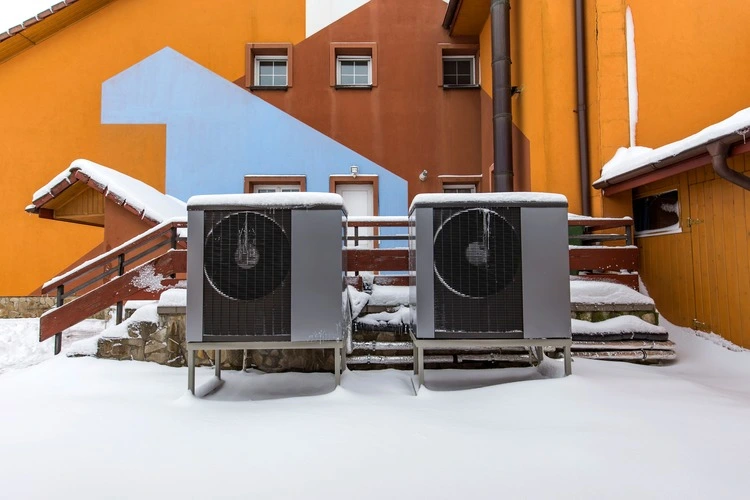
Discover how different types of heat pumps are transforming home heating across Europe and beyond – and why they are good for the planet
By
There is a rising trend of installing domestic heat pumps across Europe, with plans for the UK to follow suit as a method of limiting carbon fuel sources in the future. With 40 per cent of global emissions coming from buildings – and most of this resulting from how we heat them – heat pumps are a great way towards achieving a greener footprint on a domestic scale.
But what exactly are heat pumps, what types are there and why should we consider installing them in our homes?
What are heat pumps?
Heat pumps are a relatively low-carbon alternative to heating domestic and commercial spaces, and work by absorbing heat from the air, ground, or water. They use the same technology as an air conditioner, which cools homes using a refrigerant. The only major difference is that a heat pump has a reversing valve, which allows it to also heat homes.
Enjoying this article? Why not check out some of our related reads…
Therefore, the appliances are useful all year round, heating spaces in the winter, extracting heat from outside and transferring it inside and cooling places in summer, by moving indoor heat back outside.

They have been proven to work even in extreme temperatures – making them all the more tempting as we enter a period of climate instability.
There are several different types of heat pumps, and which is best for a building depends on several factors, including the heating needs of the occupiers, where the building is located and its size.
Here are the different types which are popular for domestic heating:
Air-source heat pumps
Air source heat pumps take heat from the air and boost it to a higher temperature. There are two types of air-source heat pumps: air-to-water heat pumps and air-to-air heat pumps.
Air-to-water pumps take heat from the outside of the building and feed it into a central heating system. These do not get as warm as a conventional boiler, meaning residents often need to install underfloor heating or larger radiators to have the same effect. These types of pumps are best suited to newer-built homes that will have a higher energy efficiency rating and better insulation.
Air-to-air heat pumps take the heat from outside and feed it into buildings via fans, meaning they can be good to use for heating a home but do not produce hot water.
Ground source heat pumps

With the sun warming the ground every day, the surface beneath our feet becomes the perfect resource for keeping our homes warm via a heat pump system.
Ground source (or geothermal) heat pumps are dependent on having a series of pipes laid underground, which is more costly and inconvenient than air-source pumps, but overall, they work slightly better, particularly in the UK and northern European countries where the ground temperature is often naturally warmer than the air.
To install one of these in a domestic setting home, either a horizontal pipe system in the garden or a vertical system – which consists of a single long pipe that is bored several metres underground –is needed.
While drilling these deep boreholes can be a lot more expensive than the horizontal arrangement, most people choose the vertical system as it takes up less room and means less of the garden is destroyed. Overall, ground-source heat pumps have a higher efficiency than their air-source counterparts, but their destructive and expensive (estimated at around £20,000) installation can be off-putting for some homeowners.
Water source heat pumps
Installing a water source heat pump for domestic buildings is dependent on location, as the system needs a water body from which the pump can extract heat.

Like the ground, water stores heat from the sun that the heat pump can extract and feed into homes through a pipe and refrigerant. Canals, lakes, ponds, and streams are all good water bodies that can be used by these types of pumps to heat and cool homes.
Hybrid heat pumps
Hybrid heat pump systems integrate any type of heat pump (air-source, ground-source or water-source) with a traditional gas boiler system – or potentially a hydrogen boiler when this technology becomes more advanced.
Hybrid heat pump systems monitor the temperature outside and automatically choose which is the most energy-efficient option to warm the house and its water.
Rising popularity – but what about the UK?
Governments around the world have started introducing policies that will help to increase the number of homes with an energy-efficient heating source. The International Energy Agency estimates that 60 per cent of Norway’s buildings are fitted with the devices, followed by Sweden at 43 per cent and Finland at 41 per cent.

Germany is another country with a heat pump population on the rise, with their rebate scheme introduced in January 2023 offering up to 40 per cent back to homeowners on the cost of buying and installing a heat pump.
The UK’s Energy Security Bill, brought in in 2022, is now providing grants and schemes that encourage the introduction of heat pumps into housing, particularly in new builds, offering homeowners a chance to save on energy bills and become more green. But, the UK still lags far behind many countries in Europe, with only 412 per 100,000 people owning one of the green devices compared to a European average of 3,068 per 100,000.
However, seeing as the technology is suitable for most UK homes and the sale of new gas boilers is set to be banned from 2035, it’s expected that there will be a huge increase in the uptake of heat pump systems across the region.




